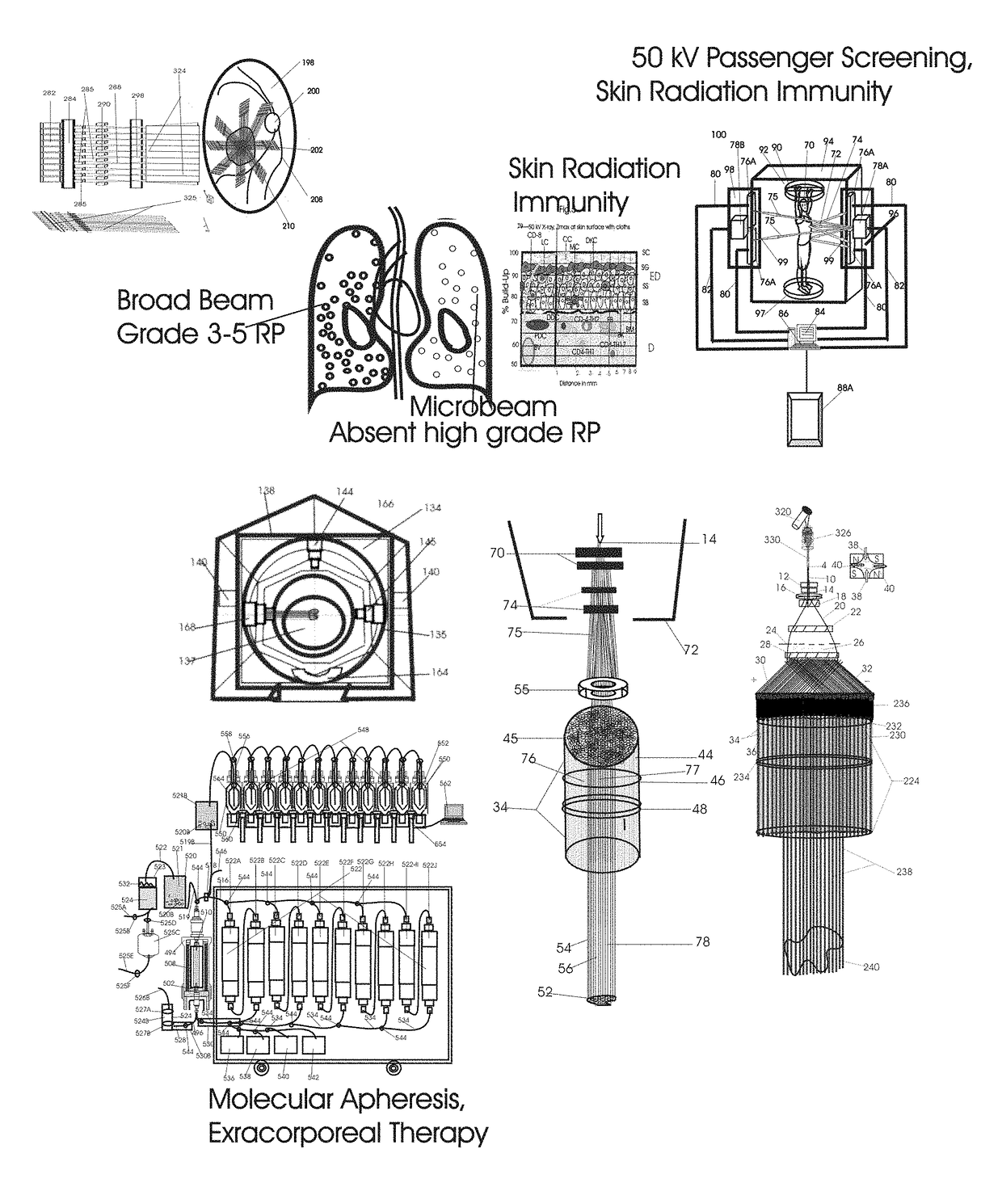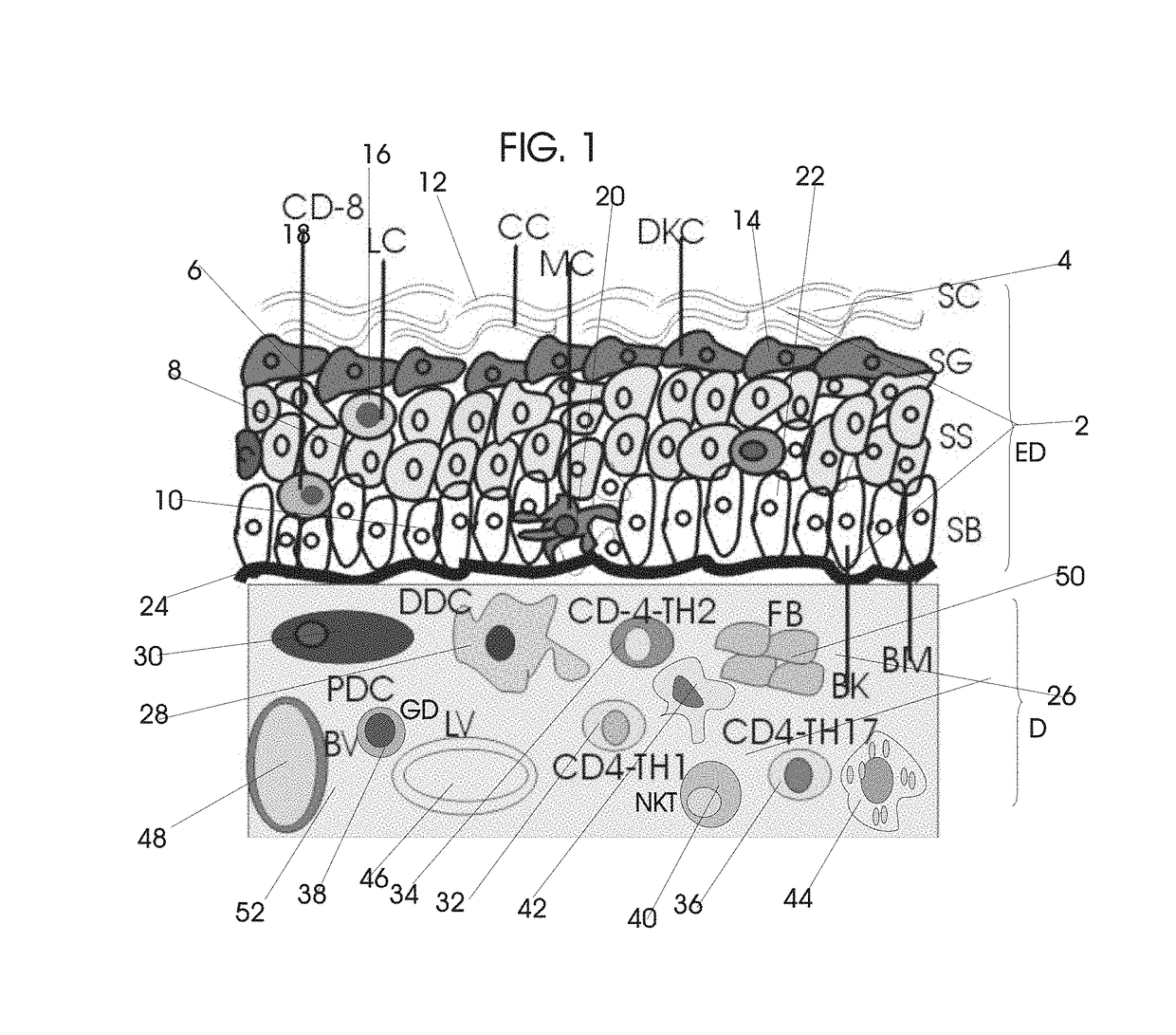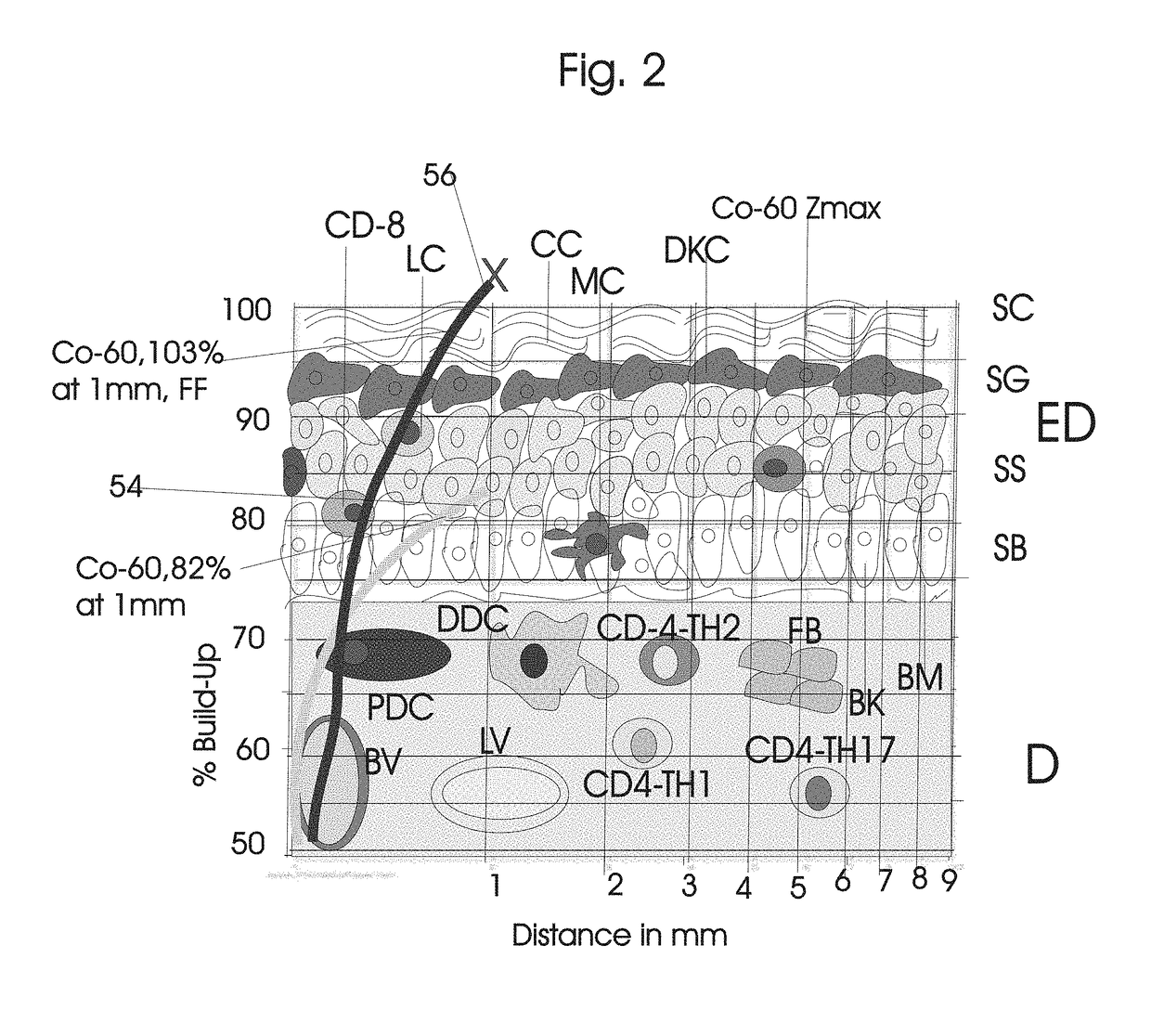Normal Tissue Toxicity Reducing Microbeam-Broadbeam Radiotherapy, Skin's Radio-Response Immunotherapy and Mutated Molecular Apheresis Combined Cancer Treatments
a radiotherapy and tissue toxicity technology, applied in the field of normal tissue toxicity reducing microbeam-broadbeam radiotherapy, skin's radio-response immunotherapy and combined cancer treatments, can solve the problems of reducing the efficacy, prohibitively expensive, and complicated ldr with higher energy x-rays, and achieves the effects of improving treatment outcome, stimulating proinflammatory cytokines, and cost effectiveness
- Summary
- Abstract
- Description
- Claims
- Application Information
AI Technical Summary
Benefits of technology
Problems solved by technology
Method used
Image
Examples
Embodiment Construction
[0215]FIG. 1 illustrates the surface anatomy of the skin with its very radiosensitive epidermis consisting of stratum corneum (SC), stratum granulosum (SG) and stratum basale (SB) and the specialized rare immune cells including the Langerhans and CD8+-T cells, the melanin producing melanocytes, and the dermis consisting of specialized dermal dendritic cells (DCs), dermal lymphatics, the blood vessels and the supporting tissue with fibroblasts.
[0216]The very radiosensitive epidermal layer 2 stratum corneum (SC) 4 stratum granulosum (SG) 6, stratum spinosum 8 and stratum basale (SB) 10 contains the corneocyte 12, terminally differentiating keratinocytes 14, Langerhans cells 16 and CD8+-T specialized immune cells 18 and melanocytes 20, basal keratinocytes 22 and the base membrane 24. The lesser radiosensitive but efficient immunity stimulating dermis 26 consists of specialized dermal dendritic cells (DCs) 28, plasmacytoid dendritic cells (pDCs) 30 and T-cells including CD+T helper cell...
PUM
 Login to View More
Login to View More Abstract
Description
Claims
Application Information
 Login to View More
Login to View More - R&D
- Intellectual Property
- Life Sciences
- Materials
- Tech Scout
- Unparalleled Data Quality
- Higher Quality Content
- 60% Fewer Hallucinations
Browse by: Latest US Patents, China's latest patents, Technical Efficacy Thesaurus, Application Domain, Technology Topic, Popular Technical Reports.
© 2025 PatSnap. All rights reserved.Legal|Privacy policy|Modern Slavery Act Transparency Statement|Sitemap|About US| Contact US: help@patsnap.com



